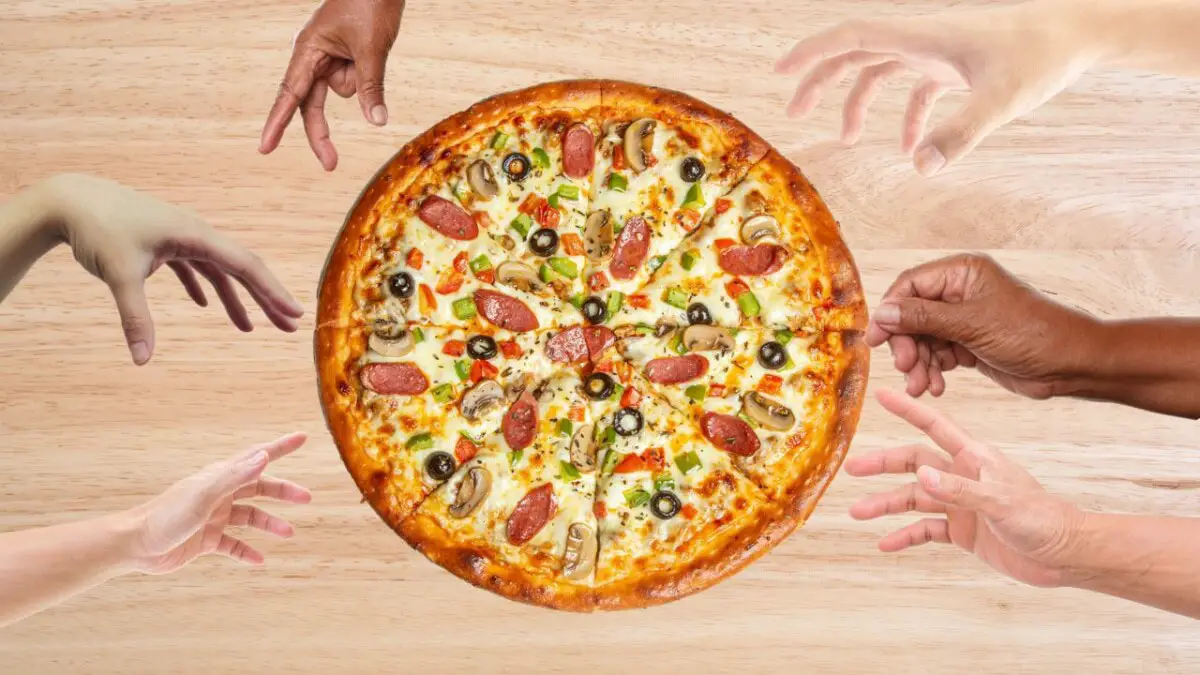Multitasking, a norm in our fast-paced society, often sees individuals juggling various activities concurrently. One such common scenario involves enjoying a meal while being engrossed in an engaging book. However, do you ever ponder the potential health implications of this habit? This in-depth article delves into the potential effects of reading while eating: is it merely a harmless habit, or could it be a habit worth reconsidering?
Although some individuals may think they’re saving time by eating and reading simultaneously, the negatives outweigh the benefits. There’s a significant risk of dropping food on your books, and the potential for distraction can hinder the retention of information from the reading. In essence, the negatives associated with eating while reading far outweigh any positives you can gain from it.

The Art of Mindful Eating
First, we must grasp the concept of mindful eating before exploring the potential drawbacks of combining reading and dining. Mindful eating transcends simple regulations; it’s a comprehensive strategy for engaging with our meals. This approach necessitates developing an understanding of the entire gastronomic journey, from ingredient selection to post-bite sensations, and places emphasis on each step along this path.
Focusing on the present moment allows individuals to forge a profound connection with their food, and subsequently, their bodies. This habit goes beyond mere eating. It fosters an attentive consciousness of hunger and satiety cues, thus paving the way for superior self-regulation in terms of food intake.
Mindful eating, in addition to yielding physical benefits, has shown an association with positive psychological outcomes. Research establishes a compelling argument. Individuals who engage in mindful eating demonstrate decreased levels of food-related stress and anxiety.
People can liberate themselves from unhealthy guilt or shame accompanying their dietary choices by adopting a non-judgmental stance towards eating. The art of mindful eating ultimately transcends mere food consumption. It evolves into a lifestyle characterized by mindfulness, fostering a positive relationship with nourishment and well-being.
- Cultivating Awareness Beyond the Plate: Mindful eating extends to the entire process of food consumption, from choosing ingredients to recognizing hunger cues.
- Psychological Well-being: Embracing mindful eating has been linked to reduced stress and anxiety related to food choices.
The Downside of Divided Attention
A study found an interesting correlation that when individuals divide their attention between tasks, such as eating and reading, they tend to overeat. This suggests potential negative implications for our overall well-being due to multitasking. Indeed, participants who undertook this type of multi-tasking consistently reported diminished meal satisfaction. Consequently, they subsequently consumed more food than necessary.
The impact of divided attention, however, extends beyond the quantity of food one consumes. It also affects the quality of the eating experience.
Dividing attention from reading compromises individuals’ ability to fully register sensory aspects in their meals, a crucial element for an enriched dining experience. One might overlook the flavors, textures, and aromas that enhance food enjoyment. A dearth of sensory awareness diminishes overall satisfaction derived from a meal. Thus, turning it into an experience with lesser gratification.
- Quality of Eating Experience: Divided attention may lead to overlooking the sensory aspects of meals, diminishing overall satisfaction.
- Long-term Consequences: Habitual multitasking during meals could impact one’s relationship with food, potentially affecting long-term health.

Reading While Eating and The Impact on Digestion
Reading while consuming a meal may extend its impact beyond our eating habits. It could influence the digestive process. The physiology of digestion is complex, requiring coordinated efforts from various organs. Divided attention might hinder the optimal allocation of resources to the digestive system. This can potentially result in issues such as indigestion or bloating.
The digestive process, moreover, operates not solely as a mechanical function. It responds to external stimuli, including mental states. Research indicates that stress and distraction during meals impede the release of digestive enzymes and gastric juices. This hampers efficient food breakdown. Consequently, habitually multitasking while eating compromises nutrient absorption and can contribute to digestive discomfort.
- Psychosomatic Influence on Digestion: Stress and distraction impact the release of digestive enzymes, potentially leading to discomfort.
- Nutrient Absorption: Habitual multitasking may compromise the body’s ability to efficiently absorb nutrients from food.
Cognitive Effects of Multitasking
Multitasking, besides its physical impact, can also influence cognitive functions. A study underscores the decrease in overall performance when individuals attempt to carry out multiple tasks simultaneously. Thus, reading while eating might compromise not only your meal enjoyment but also impede text comprehension and retention.
Moreover, multitasking’s cognitive effects transcend the immediate experience of mealtime. Over time, habitual multitasking might induce cognitive fatigue that hampers focus and concentration in diverse life aspects. This emphasizes the significance that we must construct dedicated spaces for different activities, enabling a fully engaged mind with each task independently.
- Cognitive Fatigue: Habitual multitasking can lead to cognitive fatigue, impacting overall focus and concentration.
- Creating Dedicated Spaces: Designating specific areas for different activities enhances cognitive performance.

Striking a Balance
Considering the potential drawbacks of reading while eating proves essential. However, we must acknowledge that moderation is key. It’s not every combination of these activities that will yield adverse effects. For instance, savoring a book over a leisurely weekend brunch contrasts sharply with hurriedly devouring its pages during a swift desk lunch.
In the pursuit of balance, you must crucially acknowledge the importance of conscious decision-making. By evaluating context and purpose, aspects that underpin amalgamating activities, individuals can discern if these choices enhance their overall well-being.
Striking equilibrium requires intentional selection in various scenarios. This balance requires intentionality in all areas. Making thoughtful meal choices, selecting a tranquil space for concentrated reading, or simply indulging in a distraction-free dining experience without external interruptions. Ultimately, creating a harmonious blend that elevates the reading and dining experiences is paramount.
- Intentional Decision-making: Striking a balance involves being intentional about choices made during meals and reading.
- Creating Harmonious Blends: Combining activities should enhance both the reading and dining experiences, not compromise either.
Practical Tips for Mindful Eating
Frequent multitaskers during meals can cultivate a more mindful approach to eating by adopting simple strategies. They should set aside dedicated time for their meals, minimize distractions, and savor each bite. These practices will enhance the overall dining experience.

Avoid Damaging Your Book
Be mindful of your books because eating while reading has a high risk of damaging your book as food can accidentally drop onto fresh pages. If your book is expensive, the financial pain of potential stains on your book can make you sad. Dry snacks might not be as problematic, but wet foods that leave stains can quickly ruin a good book. Constantly buying new books can become a hassle, so it is strongly recommended to finish eating before reading to avoid ruining your book.
Creating a Distraction-Free Zone
Designating specific areas for different activities effectively promotes mindful eating. By establishing a distraction-free zone specifically dedicated to meals, you can encourage focused attention on the food and thus foster an enhanced, more satisfying dining experience.
To create a dedicated space for meals, one must do more than simply select a physical location. It requires the establishment of an ambiance that fosters relaxation and engagement with food. Consequently, consider the lighting in your designated area. Opting for soft, warm illumination can significantly enhance the overall pleasantness of this setting.
Incorporating elements such as comfortable seating, soothing background music, and a vase of fresh flowers. These can indeed enhance the overall dining experience. Paying attention to these details not only sets the stage for a distraction-free meal but also transforms it into an enjoyable ritual. This elevates the act of eating from mere sustenance to a mindful and pleasurable event.

Mindful Eating Apps
Technology in the digital age can leverage mindfulness promotion as well. Numerous apps, designed to lead individuals through mindful eating practices, foster healthier relationships with food, and liberate them from mealtime multitasking habits serve a significant role in this process.
Convenient and accessible, mindful eating apps integrate mindfulness into your daily routine. These applications often feature guided eating meditations. They prompt reflective journaling about meals, providing reminders to engage in mindful practices.
Furthermore, some apps employ visual and auditory cues. These encourage slower consumption while heightening awareness of portion sizes. These tools’ versatility empowers individuals to customize their mindful eating journey, thereby facilitating the integration of mindfulness into their demanding lives. Harnessing technology’s power allows you to transform your smartphone into a valuable ally that promotes an intentional and mindful approach toward eating.
Cultivating a Mindful Lifestyle
Adopting a mindful approach to life, beyond just mealtime habits, yields far-reaching benefits. Incorporating daily routines with mindfulness practices like meditation or reflective journaling contributes not only towards an overall sense of well-being but also naturally extends into more conscious eating habits.
Recognize the interconnectedness of various facets in your daily routine to cultivate a mindful lifestyle. Expand your incorporation of mindfulness beyond meditation into activities like intentional, focused steps during mindful walking and awareness towards sensations arising from movement.
Actively engaging with this mental state throughout each day can trigger ripple effects that influence not only how you approach meals but also shape your overall mindset and behavior patterns. Approaching life intentionally and with awareness, this is how you lay a foundation for mindful decision-making, even in terms of your body’s nourishment. The adoption of an all-encompassing mindfulness approach transcends specific practices. It becomes, instead, the guiding principle that steers you toward balance and fulfillment in your life journey.
Social Aspects of Dining – Building Connections
Sharing a meal is a simple, everyday act that bears profound social and cultural significance. It serves as the bedrock of human connection. However, when we make reading while eating a common practice, we put the social aspect of dining at risk. Thus, engaging in meaningful conversations during meals becomes not just important but necessary for it is through these exchanges that connections are fostered and relationships profoundly strengthened.
Individuals may sacrifice the quality of interactions that enrich personal and social well-being through multitasking. Emphasizing the broader impact on communal experiences around a dining table underscores that we must cultivate mindfulness in our approach to shared meals.
Moreover, dining’s social dynamics transcend simple conversation. Shared meals enable bonding, foster collective memories, and fortify social ties. Be it a family dinner or an amiable assembly. The ritual of uniting for nourishment surpasses personal predilections. It is both cultural and communal.
- Consideration: Mindful eating isn’t just an individual practice. It can shape the dynamics of social interactions during meals, influencing the overall atmosphere.
- Caution: Constant multitasking during shared meals may lead to a sense of disconnection and hinder the nurturing of meaningful relationships.

Children and Role Modeling
Reading while eating indeed impacts not just adults, but also influences the habits of children in a household. Children observing those around them, particularly parents or caregivers is how children learn.
Besides the nutritional aspects, modeling mindful eating habits benefits adults and establishes a positive example for their younger family members: an act that transcends mere nourishment into holistic wellness education. It teaches the next generation to prioritize self-care through conscious consumption strategies. At home, a culture of mindful eating potentially establishes lifelong habits for children. Thus, it forms an early-age foundation, a healthier relationship with food.
Incorporating educational elements into mealtimes can indeed amplify children’s learning experience. Explaining the nutritional value of diverse foods, involving them in meal preparation, and fostering mindful awareness during meals are practices that collectively contribute to a more holistic understanding of nutrition and overall well-being.
- Consideration: Children are highly receptive to environmental cues; a mindful eating environment can positively influence their dietary habits.
- Caution: Balance is key; while mindful eating is beneficial, it’s essential to allow children to enjoy meals without creating unnecessary restrictions.

Culinary Enjoyment – A Multisensory Experience
Meals transcend the basic function of nourishment, providing a decadent multisensory affair. Taste will always reign supreme, yet visual will allure. Aroma and texture equally enhance dish enjoyment.
Engaging in mindful consumption fosters an environment where individuals wholly savor these sensory components. Consequently, transforms every meal into a gastronomic pleasure. A gratifying experience emerges when one explores the intricate flavors and textures of a well-prepared dish: each bite becomes more fulfilling and more satisfying.
Moreover, the sensory delight derived from meals transcends high-end cuisine. It is not restricted to such exclusive experiences. Engaging in mindful eating permits individuals to extract pleasure out of everyday foods. This practice nurtures a heightened recognition of various culinary adventures, their diversity and richness alike. When individuals decelerate and actively involve their senses, they can transform even basic meals into episodes brimming with gastronomic ecstasy.
- Consideration: Mindful eating isn’t about restricting certain foods but rather savoring them with awareness, bringing a new level of enjoyment to everyday meals.
- Caution: Paying attention to sensory cues doesn’t mean indulging mindlessly; it’s about finding a balance between pleasure and mindful choices.
Conclusion
In conclusion, a definitive one-size-fits-all answer does not exist to the question: “Is reading while eating detrimental?” The issue primarily hinges on striking an equilibrium that caters to your lifestyle and individual preferences. It’s about being cognizant of your eating habits, and relishing meals, all while occasionally luxuriating in the pleasure of engrossing book. Moderation and self-awareness, as with numerous aspects of life, play a crucial role in cultivating an enriching and pleasurable relationship with food and literature.
So, the next time you reach for a book during a meal, consider the potential impact on your well-being but also relish the joy that comes from combining two simple pleasures. After all, life is about finding a balance that allows you to savor every chapter, both on the plate and on the page.





